The Ease of Giving Birth Through Essential Oils and Herbs
Preparation for an easier birth starts in the thought process- in the mind. The earlier that positive associations and imagery are started the more ingrained it will be for the birth.
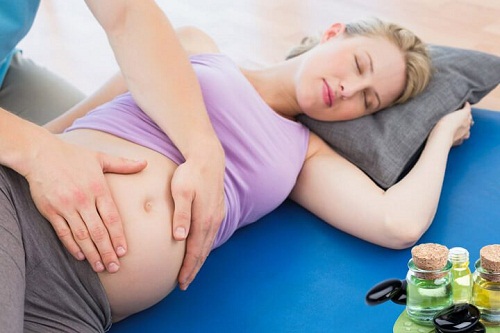
Aromatherapy
__
The scent of the essential oils used in Aromatherapy is well-known to aid relaxation and promote calm and also acts as a painkiller that stimulates circulation, healing, and may strengthen contractions. A study of 500 women in the delivery suite shows the overall satisfaction with the "aroma"—rid the hospital smell thus decreased anxiety. Essential oils used: Lavender, Clary Sage, Peppermint, Eucalyptus, Chamomile, Frankincense, Jasmine, Rose, Lemon, and Mandarine.
Jasmine
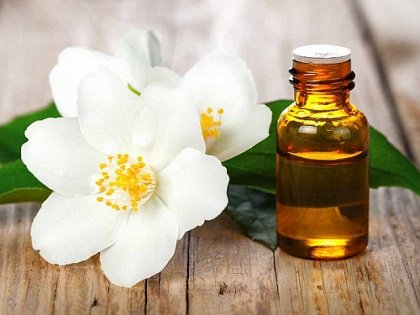
Dulls uterine pain, strengthens contractions, promotes birth and increases milk supply. Excellent when mixed with lavender and a carrier oil of Evening Primrose and vitamin E for perennial and cervical massage.
Myrrh
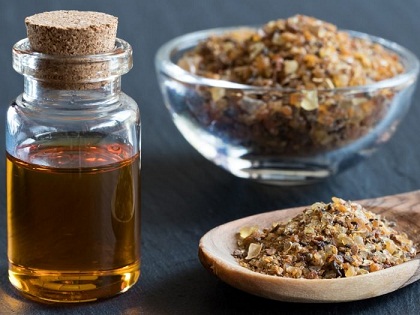
Speeds labor, opens cervix.
Peppermint
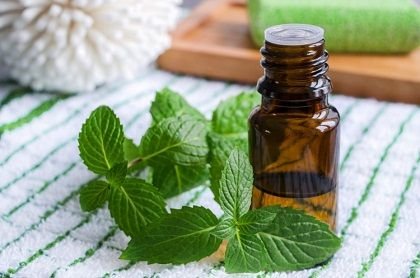
Eased nausea and vomiting.
Hydrosols
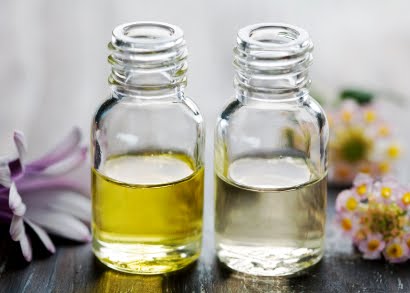
When available, hydrosols of the above oils are a lovely alternative, for misters to scent the room or for body/facial sprays and to calm the mother from anxiety during labor.
ROSE (steam distilled)

It is a uterine relaxant. While it may not sound like this is what one would aim for in delivery, essential oils are very adaptogenic, so Rose will help the uterus to work efficiently, and to return to homeostasis between contractions. It is also said to have a relaxant effect on the pelvic floor, helping to open up the pelvis, much like an opening rosebud. This would best be used in the Jacuzzi if there is one (hopefully there is, water is very effective for laboring women, in opposition, water birth is a terrific option, but this would contra-indicate the use of essential oils in the water). The emotional effects of rose are very supportive during labor and can be very overpowering if overused. So SUBTLE is the key word here! 1 drop in the bathwater would be plenty. The visualization of the cervix opening as a rosebud is very effective when used with the aroma of rose. Cleansing effect on the uterus, antidepressant, softens ligaments (easier to open pelvis to push for larger babies and smaller mamas).
CLARY SAGE
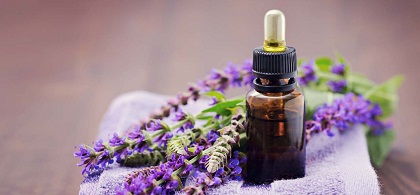
Uterine tonic—again the adaptogenic qualities of essential oils used in the correct dilution (SUBTLE) assists the uterus ineffective contractions without artificially strengthening the contractions (as in oxytocin drips often given IV). It can be euphoric and very effective for relieving anxiety and is calming to the nervous system. Some will not like the aroma of Clary Sage alone, but mixing it with Rose, Lavender, Geranium etc., will almost always produce a very pleasing aroma. Mixing to the mother's taste is important here, not a standard recipe! If the mom does not like the aroma, the physical and emotional benefits will likely be negated. Relieves tension, brings on labor, helps with expelling afterbirth.
LAVENDER (augustifolia)

It is calming, soothing, and imparts gentleness to the atmosphere when used in small amounts. DON'T overdo here. LESS IS MORE. It is also a very nice aromatic greeting for a newborn. Reduced maternal anxiety, helped with pain relief, lightened mood, calmed contractions if a woman needed rest (in early in labor). Dulls and eases the uterine pain but also increases the strength of contractions while calming the mother. Great for reducing stretch marks!
GERANIUM
Uplifting and helpful in balancing emotional states. Said to be a circulatory stimulant. Enhances circulation and is good for labor management techniques which focus on breathing.
NEROLI
Facilitates calmly relaxed breathing (especially with small amounts of Frankincense). The Cadillac for nervous anxiety can be a good choice for a transition. Only one drop on the pillow. Reduces fear, tension, insomnia, apprehension, anxiety.
These can be used as single notes, or in combination with each other or many other choices. 3 or fewer oils and keeping the aroma very simple are the best received. The birthing mom has a much heightened sense of perception.
Mandarine, or Sweet Orange, Neroli, and a hint of Nutmeg
Have been an effective diffuser combo, diffusing no longer than 5 minutes out of the half hour. Best case, if the hospitals allow candles, is the candle diffuser, using 2–3 drops at a time, or using the spritzer method. The even barely detectable aroma can be very effective, maybe even preferable!
Lori Mitchell, a RN and Clinical Aromatherapist in Montana
Methods of Application: (1) *Spray of 100 cc water with 2 drops essential oil on face sheet, pillow, or bean bag or (2) 4–6 drops oil in bath or 2–3 drops of oil in footbath or (3) Inhalation or (4) Massage with 2 drops of essential oil in 50 cc of almond oil. As of the results, 74% of women used no other form of pain relief.
HERBS
Herbs can be very useful during labor and after birth to ease pain, calm emotions, and help speed recovery been used for years by midwives and birthing women.
During pregnancy herbs that are traditionally used include:
Herbal prep tea:
Raspberry leaf (Rubus idaeus)– raspberry has a long tradition for use in pregnancy it tones the tissue of the womb and it assists the contractions because it is rich magnesium, iron, zinc, phosphorus, potassium, manganese and calcium, and vitamins A, B (1 and 3), C and E. It is therefore regarded as a nutritive tonic that strengthens the uterus. It has a similar flavor to normal black tea a little sweeter with a green grassy undertone.
For morning sickness:
The simple and most effective anti-sickness is an anti-emetic we all know Ginger Root- (Zingiber officinale). Simply take the root cut 1cm pieces off place in boiling water steep 1-2 minutes as and when need if you can handle the heat add as much as you can and steep for 15mins in little honey is good as well.
The other anti-emetic is peppermint leaf, used as a tea or added to salads can help with that queasy feeling.
Perineum herbal prep:
The perineum is a very important part of a woman’s body and it plays a special role during childbirth. It is the area of skin and muscle found between the vagina and anus. During childbirth, it stretches to allow the baby’s head through.
It is important to take care of the perineum with Perennial massage (gentle stretching of the perineum with fingers) is a well-researched method that has been shown to help reduce perennial trauma. It does not guarantee, however, that you will not tear. Most women start perennial massage around 34 weeks of pregnancy and massage the perineum once or twice a day. Before you start make sure you won’t be disturbed and you feel relaxed.
I would recommend basic sweet almond oil.
During labor:
PAIN RELIEF
With botanical pain relief most woman asks, “Does it work?” in our conversation… Yes, it does, but not like an isolated chemical, which slow down the receptors in your brain that sense pain with botanical we seek the cause of the pain and treat in a direct way to sooth and dull the pain.
OPENING OF CERVIX
You should start to feel a discomfort in the lower back and then tighten of the uterus (hardening of abdomen feel),
the uterine contraction is to open the cervix. We want to get these into a regular rhythm.
At the start, I would suggest a simple tea of
ginger and raspberry leaf for first 3-4 hours.
Ginger root – cut into pieces 1 cm use 2 and 1 bag of raspberry leaf tea or 1tsp of loose herb in 1 liter of boiling water. Steep for 15 min. dose: drink every 20min to get uterine contractions into a rhythm for about 3-4hrs
both herbs are and a mild uterine astringent because of the fragrance, which relieves uterine pain by dilating the pelvic muscles. If you are text-book this process of opening the cervix takes around 12hours. Sometimes a cm an hour and uterine contractions should be about 20min apart. The time frame will get shorter and the contraction will as well.
Blue Cohosh (Calophyllum thalictroides) 3-12hr of uterine contractions.
TINCTURE 1:4 DOSE : 1OML every 2-2.5 hours max dose 50ml in total.
Blue cohosh is a strong oxytocic herb (stimulating uterine contractions) plus a pain reliever (nervine) for contractions because of the high content of magnesium.
TRANSITION 10-12HOURS IN.
Cramp Bark viburnum opulus 1:4.
DOSE: 15ml single dose this is the final stage when the cervix is fully open. 10cm cramp bark is just to help you have the deepen of contractions. It is an antispasmodic for the abdominal wall and uterus.
PUSHING 12hours-15hours, or till BABY is out.
Can take another 15 ml of cramp bark if needed, only take 30ml in total.
Delivering placenta
After birth
to help with the process of nursing the baby. This will increase the oxytocin for the birth of the placenta. Some would take goldenseal to help this process but nursing will do this.
just like the old days huh ..
Hi! I am a robot. I just upvoted you! I found similar content that readers might be interested in:
http://yourzenlife.com/traditional-herbal-remedies-for-pregnancy-and-labour/